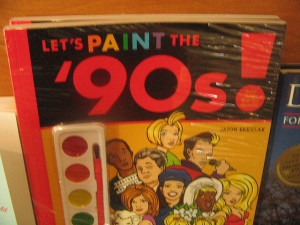Nostalgia Marketing: Jedi Mind Tricks or Proven Science?
Posted: April 28, 2015, 1:33 p.m.
by Ethan Wiggins.
Are you ready for the array of movie remakes to be released this year? Classic blockbusters such as Jurassic Park, Star Wars, Mad Max and Terminator are among the most anticipated movies of 2015. All of these movies earned faithful young fans throughout the ‘80s and ’90s. These fans are now in their 30s and 40s with children who have no idea who Luke Skywalker’s father is; what Skynet is; or how terrifying velociraptors are in a kitchen.
Nostalgia marketing has been rising to its peak as the most effective marketing strategy since the middle of the recession. During the recession, marketers used nostalgia to remind people of the “good times.” The strategy worked so well that brands continued to use it as the economy improved.
One of the best tools to use for an effective nostalgia strategy is social media. Social media users want to share content with their friends and family. When a company like BMW uses #ThrowbackThursday or #TBT to show pictures of its classic cars, social media users are transported back in time, and they don’t want to be in that moment alone. They want to share the moment, so they share or retweet the image.
These posts also help companies connect with their longtime consumers. As they share a company’s photos, tweets and posts, there are more opportunities to attract new consumers.
As noted by Vocus’s social PR manager, Adrienne Sheares, in a previous Platform article, nostalgia is the most effective way to target the millennial generation. This is evident from brands like Microsoft, Sony and Nickelodeon using the ’90s as the decade to remember.

However, some of the aforementioned movies were released well before any of the millennials were even thought of. So why are the movie companies targeting these people in their 30s and 40s?
Well, like I said, many of these potential viewers have children who have never seen the previous versions of the movies and thus are potential new consumers. Not only that, but the millennials who weren’t able to see the movies in the theaters back in “the glory days” are now piqued by the beautiful scenes of a giant Megalodon soaring out of the waters of Jurassic World or the new crossguard lightsaber. This increased interest has already generated an incredible buzz throughout the Internet and social media.
Therefore, if the older generations choose to relive their past and repeat their purchases, and the new generations become new consumers, then these movies will attract nearly double the viewers of their previously record-grossing versions. That is the force (not Jedi) that drives nostalgia marketing and why it will continue to work.

Nostalgia marketing is becoming the one strategy that is necessary to survive in this social-media-driven world. It’s up to brands to choose their best marketing strategies. And that leaves us with only one thing to say:
“Come with me if you want to live.”




